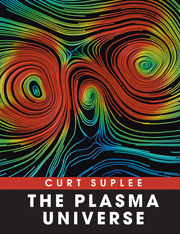Book contents
- Frontmatter
- Contents
- List of Figures
- Preface
- Chapter 1 The Fourth State of Matter
- Chapter 2 The Music and Dance of Plasmas
- Chapter 3 The Sun–Earth Connection
- Chapter 4 Bringing the Sun to Earth: The Story of Controlled Thermonuclear Fusion
- Chapter 5 The Cosmic Plasma Theater: Galaxies, Stars, and Accretion Discs
- Chapter 6 Putting Plasmas to Work
- Index
Chapter 1 - The Fourth State of Matter
- Frontmatter
- Contents
- List of Figures
- Preface
- Chapter 1 The Fourth State of Matter
- Chapter 2 The Music and Dance of Plasmas
- Chapter 3 The Sun–Earth Connection
- Chapter 4 Bringing the Sun to Earth: The Story of Controlled Thermonuclear Fusion
- Chapter 5 The Cosmic Plasma Theater: Galaxies, Stars, and Accretion Discs
- Chapter 6 Putting Plasmas to Work
- Index
Summary
LIKE “WEATHER,” plasma is a deceptively simple word signifying a complicated, fascinating and baffling range of phenomena. No succinct definition quite contains its dazzling variety.
A plasma is, at its most fundamental level, an “ionized gas.” But that phrase doesn't really capture the cozy glow of neon lights that beckon nocturnal strollers on city streets, or the gossamer shimmer of the aurora borealis. And it certainly doesn't convey the violence with which the Sun's plasmas routinely blast hundreds of millions of tons of mass out into space at a million miles an hour.
Alternatively, a plasma can be defined as a collection of charged particles whose dynamics are chiefly governed by electromagnetic forces. But that seems a bit tame to describe what goes on in nuclear fusion reactors, where the temperature hits 100 million degrees in a seething mayhem of particles trapped by invisible magnetic fetters. Nor is it adequate to depict the whirling inferno of plasma that forms around a black hole as it sucks whole stars into oblivion.
Even the most popular descriptions miss the mark. Plasmas are often called the “fourth state of matter,” to distinguish them from the more familiar solids, liquids and gases that fill our world. That's a useful distinction. But it's only meaningful in a few odd spots in the universe where solids, liquids and gases can actually exist.
- Type
- Chapter
- Information
- The Plasma Universe , pp. 1 - 14Publisher: Cambridge University PressPrint publication year: 2009



